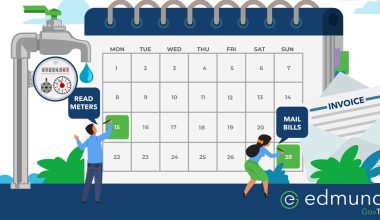Sometimes, when doing a sales presentation, I will ask if a utility prints payment barcodes on their bills. On more than a few occasions, I’ve had people confuse the postal barcode with a payment barcode.
What are the differences between the two? Let’s take a look…
Postal barcodes
Postal barcodes are the most common barcode found on utility bills. These barcodes, known as Intelligent Mail barcodes (IMb), are used by the Postal Service for sorting mail using high speed optical scanners. In order to receive any type of postal discount for your mailings, you must print the IMb on your mailpiece.
Placement of the IMb depends on the type of bills you print. For post card bills, the IMb can print either print immediately above or below the address block or in the lower right corner of the bill. If you print full page bills, either in-house or using an outsource printer, the IMb will print immediately above or below the address block, so it shows through the window envelope.
An IMb barcode is composed of four distinct symbols (tracking region only, ascending, descending and both ascending and descending).
Payment barcodes
Payment barcodes are used to expedite the process of entering payments. These barcodes generally encode at least the customer’s account number and amount due.
When entering payments in a system configured for processing barcodes, the user merely scans the barcode rather than keying in the customer’s account number. This can be used by cashiers handling walk-in payments or by a customer service representative entering mail payments in batches.
Payment barcodes generally look more like a traditional barcode (not unlike the UPC barcode used by most grocery stores) composed of narrow and wide bars of uniform height.


